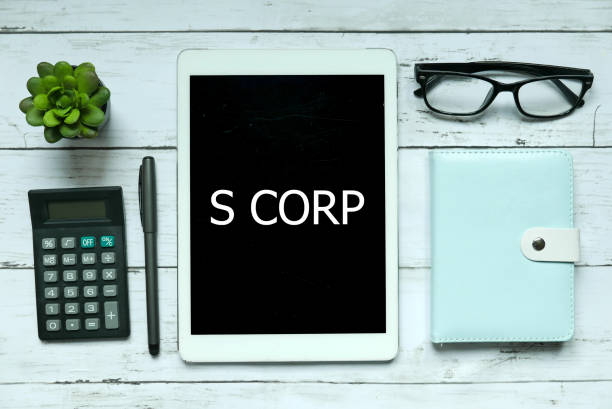The S corporation is a popular choice among small businesses and freelancers. It has several benefits, including pass-through taxation and limited liability protection for shareholders. In this article, we’ll go over the requirements for setting up an S Corp and the pros and cons of doing so.
What is an S corporation, and what are the S Corp requirements?
An S corporation is a type of corporation formed by a small business owner and provides limited liability for the owners. It’s also called an S corp because it’s classified as an “S” corporation on your tax return.
An S Corp is a tax classification, not a separate legal entity. If you form an S Corp, you will still be considered self-employed by the IRS and have to file Schedule C (or Form 1040 if your net income from self-employment exceeds $400).
You can also file Form 1040 using Schedule C if you don’t want to take advantage of certain benefits of filing as an S Corp, such as paying yourself wages or taking distributions from the company without having them included in your income taxes.
S Corp requirements for ownership
It should be no surprise that the requirements for ownership are the same as C corporations. As with a C corporation, you can only be one shareholder of an S corporation. There are no limits to who can own an S corporation, though certain tax requirements must be met for someone to be considered an owner.
The IRS requires that at least one person own more than 50% of the stock shares to qualify as an owner. This means you need at least two shareholders if you have only one share; if your business has more than one shareholder (or if you’re filing a multi-member LLC), then your requirement is simply having at least two owners/shareholders who own over 50% of all shares or voting rights.
These numbers apply regardless of how many people hold those shares; so long as they each individually meet this threshold, they’ll all still count toward ownership requirements even if they aren’t present when decision-making or voting occurs!
How to set up an S corporation
To set up a new S-corporation, you must first file Articles of Incorporation for an LLC or C-corporation. After these are on file with the state where your business will be registered, you can apply for an EIN from the IRS. Next, submit Form 2553 to the IRS and your state’s Secretary of State office using their official forms.
Advantages of setting up an S corporation
If you’re thinking about setting up an S corporation, here are some of the advantages:
- Lower taxes. The double taxation of C corporations is eliminated in an S corporation, so profits and losses flow through to the owners and are taxed only once, at the individual level. Suppose a shareholder’s share of net income (after all expenses) is greater than his or her share of distributions from the company. In that case, those earnings can be distributed to him or her as dividends without incurring additional tax liability until they’re withdrawn from his or her account. If he or she receives $15,000 in dividends but has contributed $7,500 toward management expenses during that year and has not received any other distributions from the corporation (which could also be considered taxable income), his/her taxes will be calculated as follows:
- Lower startup costs. A sole proprietorship generally requires only filing one simple form with your state government—the Articles of Organization and purchasing business licenses. In contrast, an S corp needs filing fees for articles with both federal and state governments plus additional fees for federal tax identification numbers (TINs). New businesses must start on a solid legal footing so they can focus on growing their business instead of worrying about legal issues down the road.
- Lower administrative costs: A small company may have less than 5% of total operating expenses; however, small businesses often find themselves burdened by high administrative costs due to having too many employees handling clerical tasks such as payroll administration rather than focusing on higher-value work resulting in financial success for their companies’ futures
Disadvantages of setting up an S corporation
There are several disadvantages to setting up an S corporation, including the following:
- S corporations are not allowed to have foreign shareholders. This is an issue if you want to open a subsidiary in a different country or if you want to invest in international companies.
- You cannot have more than 100 shareholders in an S corporation. This cap can be inconvenient if your business is growing very fast and you need more capital or financing than the amount you’ve already raised from people who invested their own money into your company.
- Non–resident aliens cannot hold stock in an S corporation unless they’re married (or related) to someone who owns at least 10 percent of that particular entity’s shares (if there are no other non-resident aliens who hold more than 50 percent).
How to register your business as an LLC and then elect to be taxed as an S corporation
As mentioned above, the requirements to form an LLC are generally quite easy. You’ll need to file Articles of Organization with your state, and you may also be required to register with other local agencies. After that, you can begin operating as a business entity.
Once you have your LLC in place, it’s time to move on and make sure that it’s eligible for S corporation status. To do this, you will need to file Form 2553 with the IRS; this form allows your LLC to be taxed under Subchapter S instead of as a partnership or sole proprietorship. In addition, make sure that all owners sign their shares over into the new company; both parties will also need an EIN number before submitting this form (and should receive one shortly after registering).
Once your S corporation election has been approved by both entities (the IRS and state), it’s time for some good news: You no longer have any tax obligations! All profits generated from sales made within an S corp are considered “pass-through income,” which means each owner reports their share directly on their personal 1040 return without having taxes withheld from any payments or dividends received from those sales revenue streams, even if they’re reinvested back into expanding operations by buying more equipment or hiring additional staff members.
This type of structure helps small businesses grow faster since there’s less money going out beforehand due solely towards paying taxes at every step along the way–which means more money left over for other things like advertising campaigns later down the road when those investments start; paying off handsomely.”
Conclusion
Being able to start your own business and also keep more of what you make is a pretty good deal. That’s why we encourage everyone to consider S Corp’s status when forming their small business. Thankfully, there are plenty of resources out there to help you along the way.



